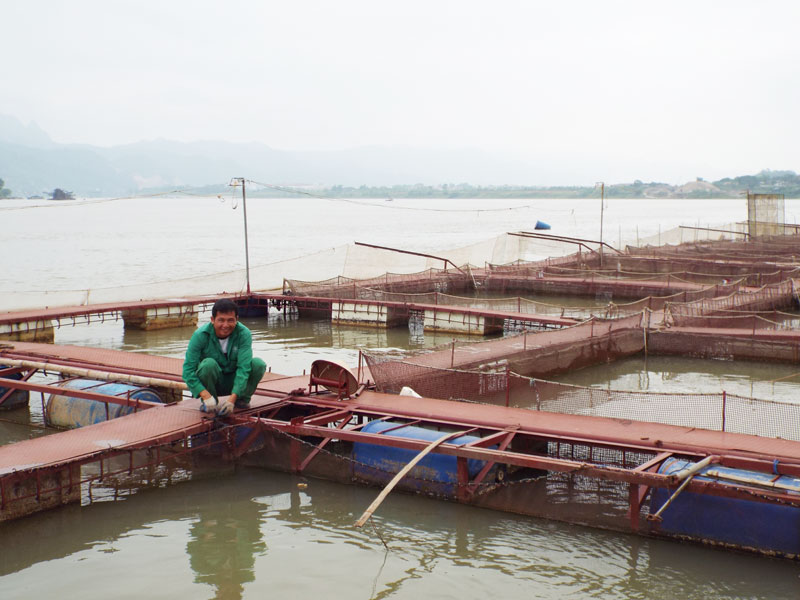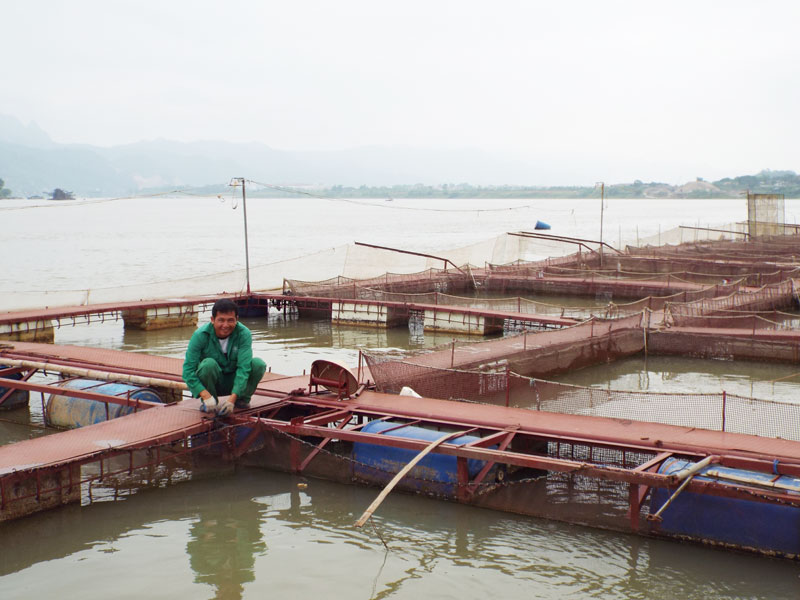
(HBO) - In the current situation of aquatic resources in Da river basin, Hoa Binh lake area faces the risk of decline, Ministry of Agriculture and Rural Development instructed the General Department of Fisheries to coordinate with localities to develop and implement the project of protecting and regenerating aquatic resources in Da River basin in the period of 2018-2022, to achieve the objective of sustainable development and exploitation of aquatic resources in the region.

Hoa Binh province has attracted 35
businesses, cooperatives to invest in breeding fish in Da river area.
Song Da is the largest tributary of the Red
River system, flowing through the provinces of Lai Chau, Dien Bien, Son La, Hoa
Binh, Phu Tho and Ha Noi with a great aquatic resources. According to the
research, the fish fauna of the Da river basin has 19 different species of high
economic value, 8 species of rare fish in the Vietnamese Red Book and 3 clans
have characteristics for mountainous areas and Northern plateau. The establishment
of the artificial reservoir system together with the increase in the intensity
of exploitation and development of aquaculture without controll causes
seriously impact on the plan to protect fisheries resources in the near future.
The number of boats have increased rapidly. In Hoa Binh province, there were
only 950 units in 2008, but now, this number has increased to 1,475 units,
1,139 net plates, nearly 500 lighters, and 3 layers of 1,200 sheets. Meanwhile,
Son La province has 520 motor boats with a capacity of 4,695 cv, 2,535 manual
boats operating on rivers and lakes and 14,250 fishing vehicles.
According to Mr. Hoang Van Son, the
head of the Fisheries Department, Hoa Binh said: Hoa Binh Lake has a water
surface area of 8,892 hectares in 19 communes near the lake. Aquaculture is
bringing opportunities for hunger elimination, poverty reduction and enrichment
for people and businesses. The province has about 4,050 cages for fish raising,
equivalent to 220 thousand m3, the total output reached 7,700 tons, creating
jobs and stable income for over 5,000 workers. When the project is implemented,
it will contribute the human resources to the province for carrying out
activities to support, propagate and improve the capacity of State management
when implementing the Law on Fisheries and relevant documents to achieve higher
efficiency, contributing to sustainable development of aquaculture.
In Lac Thuy district, communes have been succeeded in promoting their One Commune-One Product (OCOP) products while others are still struggling to position their typical farming products in market. Some communes in the district still fail to have their products met OCOP programme’s requirements, while others have seen their certifications expired.
The inspectorate agency of Hoa Binh province has issued Official Dispatch No. 1090/TTr-PCTN to provincial departments, agencies, localities, business associations, enterprises, and investors regarding measures to improve informal component indexes of the Provincial Competitiveness Index (PCI).
Hoa Binh is taking concrete steps to improve its investment environment, with a strong focus on supporting businesses, settling obstacles for strategic investors, and creating opportunities for robust development in the coming years.
Under the blazing early summer sun, the construction site of Nhuan Trach Industrial Park (IP) in Luong Son district is abuzz with activities from dawn to dusk, a testament to the determination of the investor to meet their construction targets on schedule.



